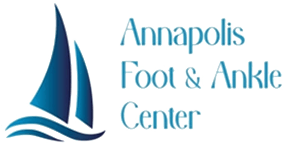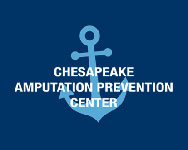Traditional Achilles Tendon Repair Options
Treatment for an Achilles tendon rupture typically involves surgery to reattach the torn ends of the tendon. The two most common surgical techniques are open repair and mini-open repair.
In open repair surgery, the surgeon makes a single large incision in the back of the leg to access the tendon. This approach provides good visibility of the injury site but has a higher risk of complications like infection and nerve damage. Recovery can be lengthy, often requiring a cast and crutches for several weeks.
Mini-open repair surgery uses one or more small incisions to access the tendon. Special instruments are used to perform the repair through these incisions. This approach is less invasive than open surgery but still carries similar risks and recovery time.
What is PARS Minimal Incision Achilles Surgery?
PARS (Percutaneous Achilles Repair System) is an advanced, minimally invasive surgery for repairing a ruptured Achilles tendon. With PARS, the surgeon makes 4-8 small "stab" incisions rather than one or two larger incisions. Special surgical anchors are placed in the heel bone, and surgical tape is used to secure the ends of the torn tendon to the anchors.
Benefits of PARS Minimal Incision Achilles Surgery
The PARS technique offers several advantages over traditional Achilles tendon repair options, making it an attractive choice for many patients and surgeons alike.
Smaller Incisions
One of the most significant benefits of PARS surgery is the use of smaller incisions. Traditional open repair techniques require a single large incision, typically 6-8 cm long, while mini-open repairs use one or two incisions of around 3-4 cm in length. In contrast, PARS surgery uses 4-8 tiny "stab" incisions, each only about 2-3 mm long. These smaller incisions minimize scarring and soft-tissue damage, leading to a more cosmetically appealing result and reduced risk of wound complications.
Faster Recovery
The minimally invasive nature of PARS surgery often translates to a quicker recovery compared to open or mini-open repairs. With less soft-tissue disruption, patients may experience less postoperative pain and swelling, allowing for earlier mobilization and weight-bearing. Many patients can begin physical therapy and range-of-motion exercises sooner, accelerating their return to normal activities and potentially shortening the overall rehabilitation process.
Lower Infection Risk
Surgical site infections are a concern with any surgical procedure, but the risk is notably lower with PARS surgery. The smaller incisions used in PARS minimize the exposure of deep tissues, reducing the likelihood of bacteria entering the wound. Additionally, the shorter operative time associated with PARS further decreases the risk of infection. Studies have shown that PARS patients have a significantly lower incidence of wound complications and infections compared to those undergoing open or mini-open repairs.
Less Pain
Patients who undergo PARS surgery typically report less postoperative pain compared to those who have open or mini-open repairs. The smaller incisions and reduced soft-tissue trauma associated with PARS contribute to less pain and discomfort in the days and weeks following surgery. This can lead to a more comfortable recovery process and may reduce the need for pain medications.
Preserved Blood Supply
The Achilles tendon has a relatively poor blood supply, which can impair healing after injury or surgery. One advantage of the PARS technique is that it minimizes disruption to the tendon's blood supply. By using smaller incisions and specialized instruments, PARS allows surgeons to repair the tendon without extensively disturbing the surrounding soft tissues containing vital blood vessels. Preserving the tendon's blood supply may promote better healing and reduce the risk of postoperative complications.
Risks and Considerations of PARS Achilles Surgery
As with any surgical procedure, PARS minimal incision Achilles surgery does carry some risks. These include:
- Nerve Damage: Although rare, there is a small risk of damage to the nerves around the ankle.
- Re-rupture: There is a chance that the repaired tendon could tear again after surgery.
- Blood Clots: Immobilization after surgery can increase the risk of developing a blood clot in the leg.
While PARS surgery offers numerous benefits, it's essential to remember that individual results may vary. Factors such as age, overall health, and the severity of the Achilles tendon injury can influence outcomes. A skilled foot and ankle surgeon can help you weigh the potential advantages and risks of PARS and other treatment options to determine the best approach for your specific case.
Personalized Achilles Tendon Treatment in Annapolis, MD
At Annapolis Foot & Ankle Center, we pride ourselves on providing personalized care to every patient who comes through our doors. Our podiatric care team takes the time to listen to your concerns and develop a customized treatment plan that meets your unique needs. We understand that every patient is different, and we strive to provide the highest level of care to ensure your satisfaction.
If you've suffered an Achilles tendon injury, don't wait to seek treatment. Schedule an appointment with Annapolis foot doctors Eric Harmelin or Nicholas Fifelski today to discuss your options, including minimally invasive PARS Achilles tendon repair surgery. Take the first step towards getting back on your feet and enjoying a healthy, active lifestyle once again.



